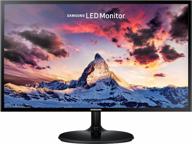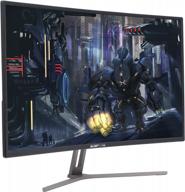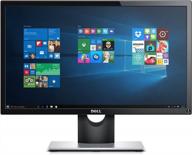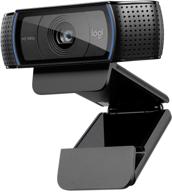
Review on ViewSonic VX2457-MHD Gaming Monitor - FreeSync, 1920X1080P, 75Hz, Flicker-Free by William Wright

Understand its limitations and it could be a great monitor!
For the most part, this monitor is a pretty standard, decent monitor. No real cons compared to what is expected at this price point, but nothing special either. With one big exception: Freesync. As far as I know, this is the cheapest 24-inch FreeSync monitor on the market. Which is actually very important. Given that everything else works the way you do, expect this review to be almost entirely devoted to that one feature. First, a quick overview of how FreeSync works and what it entails. Most people looking at this Watching this might already fully understand this, so feel free to skip it. Basically, a monitor works by rendering a scene a specified, specified number of times per second on a precisely timed refresh cycle. A graphics card, on the other hand, works by rendering a scene from top to bottom and then immediately starts rendering the next scene. The current rendering information is stored in a buffer, and when the monitor's cycle time is approaching, the current contents of the buffer are sent to the monitor. This process can pose a problem if the monitor is designed to receive the buffer in the middle. Updates - the top half of the screen n is the next frame and the bottom half is the previous frame. Especially when moving quickly from side to side, this can cause objects, walls, etc. to "break" on the screen - commonly referred to as "screen tearing". A common solution to screen tearing is vsync, which essentially has multiple buffers; a hot buffer that receives the rendered data and an output buffer that is only updated when the hot buffer has completely finished rendering. Unfortunately, for a variety of reasons, enabling vsync can have severe performance and input latency implications, often making it undesirable (admittedly most of the issue here is software/implementation related, but still). Freesync works by allowing the monitor to change its refresh rate as long as the refresh cycle is within a certain functional range. This monitor has a free sync range of 48 to 75 Hz, which means that if each frame is between 1/48 and 1/75 of a second after the previous frame, the monitor will update exactly when the next frame is ready. instead of the usual update cycle. If the frame rate drops to 45 fps or increases to 80 fps, Free Sync no longer matters. The only reason this monitor doesn't get 5 stars is because 48 to 75 is nice. weak range. I fully understand the upper limit; At this price point, it would be unreasonable to even expect a 144Hz refresh rate (in fact, 75 is the upper limit for a monitor in general). However, I would really like a better lower limit like 30 fps. I personally prefer a higher refresh rate, but setting it high enough to *usually* run at (say) 60fps often results in occasional slowdowns, and sometimes slowing down to 30fps is still a pretty good experience - if this is not the case, you will suddenly have clearly visible pauses along with the slowdown. However, it's pretty easy to keep updates in this area - AMD's driver set has a frame capping option, so just set the universal frame cap up to 75Hz - then for low-end just make sure your game is set to quality settings that match your graphics card to ensure that 48 fps can almost always be exceeded. In theory, you can also enable vsync; Since the monitor adapts its refresh rate to the buffer, vsync *SHOULD* have minimal performance impact in the realm of vsync, but I think that's a bad idea since the purpose of enabling vsync is to reduce frame tearing eliminate falling prices. under 48fps. and since this only happens outside of the free-sync range, performance *will* be impacted just when performance is already at its lowest. Bad combination :) So if you put all this semi-technical info in the context of real games: PROS - No more screen tearing! (usually in certain contexts) - Very affordable! - Overall a damn good entry-level monitor, minus the CONS - A 75Hz upper limit on refresh can be undesirable, especially when playing multiplayer games with twitches - A lower limit of 48Hz means you have to be a bit more careful with your video Rendering quality settings or loses free sync efficiency as you slow down. So if you ****HATE**** screen tearing but also ****HATE**** the input lag that usually comes with v-sync and if you don't play a lot of twitchy/mp games , this can be a great solution at a really affordable price. If you really like the higher refresh rates of other monitors then this probably isn't the best choice, but any options that fill that need are a noticeable price increase over this option.

- Viewsonic has always made great products and this one is no exception.
- Unreliable build quality
New products
Comments (0)
Similar reviews
Top products in 🖥 Monitors

Samsung Flat Monitor Super Slim Design 27", 1920X1080P, 75Hz, Flicker Free

112 Review

Sceptre C325B-144R: Advanced FreeSync HD Display with Wall Mounting and Tilt Adjustment

94 Review

Dell SE2216HV LED 💻 Monitor with 60Hz Refresh Rate

101 Review

Dell E2318Hx LED Lit Monitor: High-Definition Display with Flicker-Free Technology and IPS Panel

109 Review
Another interesting products

50AA2500 EBL Individual Battery Charging System - Rechargeable Batteries

56 Review

Smartphone Samsung Galaxy A50 4/64 GB, 2 SIM, black

82 Review

Renewed Logitech G PRO X Wireless Lightspeed Gaming Headset with Blue VO!CE Mic Filter for Immersive Gaming Experience

122 Review

💻 Get Amazing Video Quality with Logitech HD Pro Webcam C920 (Discontinued Edition)

83 Review


